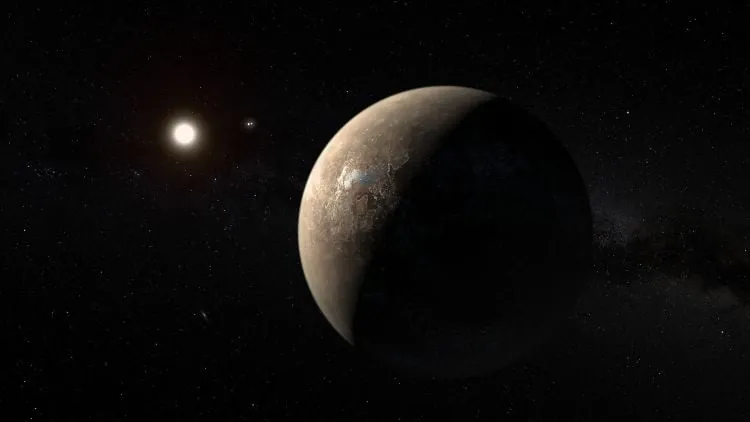
Unveiling the Cosmic Dance: Tidal Forces and the Fate of Habitable Zone Planets
2025-08-20
Author: Arjun
The Impact of Tidal Forces on Planetary Orbits
Ever wondered how tidal forces might shape the future of planets in the habitable zone? A groundbreaking study led by a team of international researchers has set out to answer this very question, exploring the powerful tidal forces that are far more intense than those we experience on Earth. Their focus? Exoplanets with eccentric orbits around low-mass stars and the implications for potential life beyond our planet.
The Exoplanet Trio Under the Microscope
Using cutting-edge computer models, the researchers simulated tidal forces on familiar Earth and compared them to three intriguing exoplanets: Proxima Centauri b, GJ 3323b, and TRAPPIST-1e, situated 4.24, 17.5, and 40 light-years from us, respectively. Each of these planets orbits stars significantly lighter than our Sun—around 8% to 12% of its mass. Remarkably, these exoplanets exhibit eccentricities that are far more pronounced than Earth's, indicating their orbits may lead to unique geological and climatic phenomena.
Tidal Forces: A Mighty Influence
The findings of this research are astonishing: tidal forces acting on planets with eccentric orbits could manipulate their trajectories up to 100 times more than those on Earth. This manipulation extends beyond mere orbital evolution, affecting planetary surface geography and perhaps even eradicating landmasses altogether. The study points out that if tidal forces were strong enough, continents could be eroded, leading to a scenario where these planets resemble water worlds—or aqua-planets—teeming with new possibilities for life.
Lessons from Our Solar System
The significance of tidal forces isn't confined to distant exoplanets; they play a familiar role here in our own solar system. Take the Earth and Moon: Although the Moon is just 1/81 the mass of Earth, its gravitational influence creates daily ocean tides that are vital for navigation and fishing. Furthermore, the striking example of Io, one of Jupiter's moons, showcases how intense tidal interactions can lead to dramatic geological signs, such as volcanic activity, thanks to constant flexing caused by its eccentric orbit.
Tidal Forces: Key to Understanding Habitable Worlds?
Europa, another of Jupiter’s moons, also benefits from significant tidal forces. Combined with gravitational pulls from nearby Ganymede, these forces have created a potentially habitable ocean beneath its icy crust, making it a prime target for NASA’s Europa Clipper mission. As we delve deeper into the significance of tidal forces beyond our solar system, the study emphasizes that our understanding of how planets form, evolve, and potentially harbor life continues to grow.
The Future of Exoplanet Discovery
As the catalog of habitable zone exoplanets expands, so does our ability to predict their potential for habitability—thanks to insights gained from tidal forces. What new discoveries await us regarding these cosmic ballerinas in the habitable zone? Only time will unveil the secrets of the universe, reminding us all to keep exploring, keep questioning, and always keep looking up!



 Brasil (PT)
Brasil (PT)
 Canada (EN)
Canada (EN)
 Chile (ES)
Chile (ES)
 Česko (CS)
Česko (CS)
 대한민국 (KO)
대한민국 (KO)
 España (ES)
España (ES)
 France (FR)
France (FR)
 Hong Kong (EN)
Hong Kong (EN)
 Italia (IT)
Italia (IT)
 日本 (JA)
日本 (JA)
 Magyarország (HU)
Magyarország (HU)
 Norge (NO)
Norge (NO)
 Polska (PL)
Polska (PL)
 Schweiz (DE)
Schweiz (DE)
 Singapore (EN)
Singapore (EN)
 Sverige (SV)
Sverige (SV)
 Suomi (FI)
Suomi (FI)
 Türkiye (TR)
Türkiye (TR)
 الإمارات العربية المتحدة (AR)
الإمارات العربية المتحدة (AR)